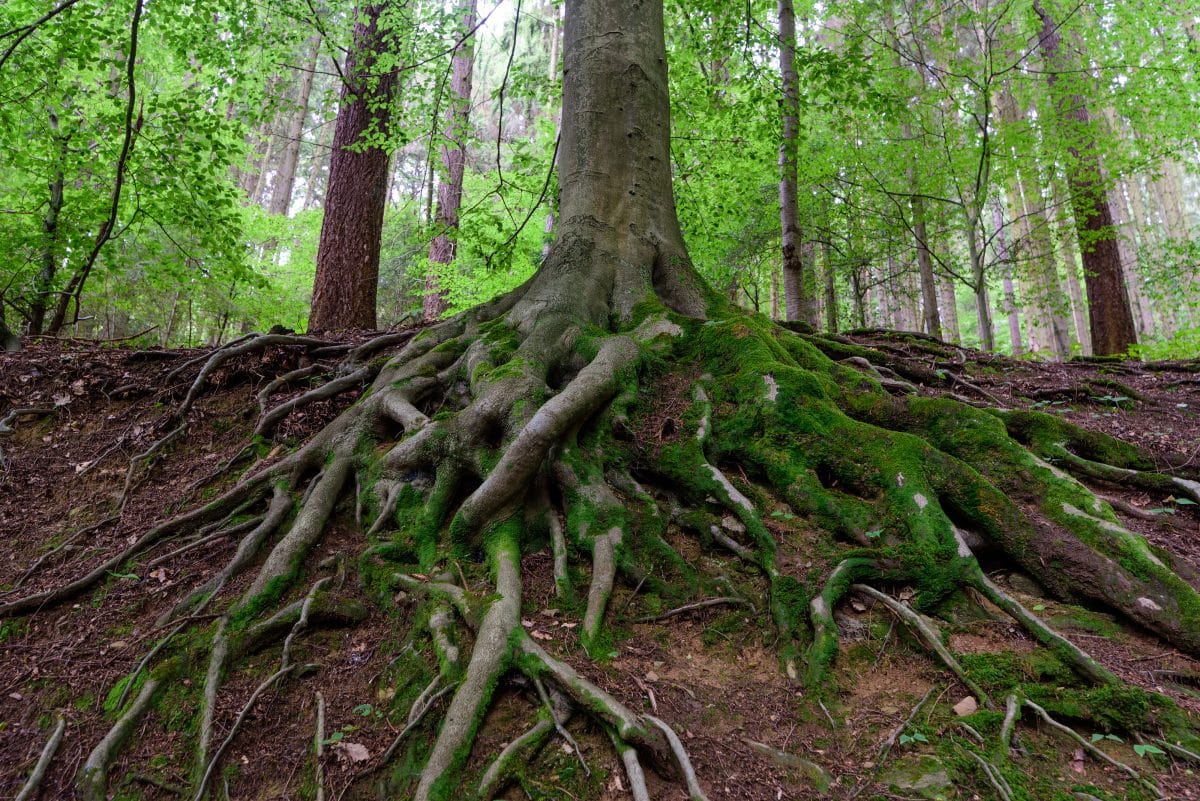The Impact of Tree Roots on Your Drains
The Impact of Tree Roots on Your Drains
Trees are the unsung heroes of our garden, offering shade in the summer, shelter for wildlife, and that lovely rustling sound on a breezy day. But while they look beautiful above ground, they can be quietly causing chaos below the surface.
As trees grow, their roots naturally seek out sources of moisture – and your drainage pipes are often the perfect target. Over time, these roots can break into your drainage system, leading to blockages, leaks, and costly repairs.
If you’ve ever wondered why your drains keep clogging or why your garden smells like something died under it, tree roots might just be the culprit.
Let’s explore how tree roots impact your drains, how to spot the warning signs, and – most importantly, how to prevent and fix the problem before it becomes a plumbing nightmare.
1. How Tree Roots Invade Drains
Tree roots are naturally drawn to water and nutrients, both of which are abundant in your drainage pipes. Even the tiniest crack or loose joint can release moisture, signalling nearby roots that a perfect water source lies ahead.
Roots begin to infiltrate through these small openings, gradually growing inside the pipe where they continue to expand and thrive. As they grow thicker, they start to trap debris, toilet paper, grease, and other materials passing through, eventually forming a blockage.
Once this process starts, it rarely slows down. Without professional intervention, it can lead to major issues, including pipe fractures, backups, and total system failure.
2. The Major Impacts of Tree Roots on Your Drains
Here’s what happens when tree roots make your drainage system their new home:
🌳 1. Blockages
As roots grow into your pipes, they begin catching anything that flows past, from food waste and grease to hair and wipes. Over time, this build-up forms solid blockages that restrict or completely stop water flow.
The result? Slow drainage, overflowing sinks, gurgling toilets, and, in some cases, water backing up into your home.
Warning signs:
Water pooling around drains or manholes
Frequent blockages in toilets or sinks
Gurgling sounds when flushing
If you’re dealing with repeated clogs that never seem to stay fixed, it’s likely there’s more going on underground.
🧱 2. Structural Damage to Pipes
Roots don’t just stop at creating blockages, they also exert enormous pressure on your pipes. As they expand, they can cause cracks, fractures, or even collapse sections of pipework.
Older clay or concrete pipes are particularly vulnerable because they can develop hairline cracks over time, allowing roots to penetrate easily.
Once the structure of your pipe is compromised, you’re looking at expensive repairs, sometimes even full pipe replacement if the damage is extensive.
🕳️ 3. Slow Drainage
Even before a full blockage occurs, roots wrapping around or growing inside your pipes can restrict the flow of water. This means your sinks, showers, and toilets will start draining slower than usual.
Slow drainage is an early warning sign that should never be ignored. It’s far easier (and cheaper) to deal with root intrusion early on than after it’s caused significant damage.
💩 4. Foul Odours
When roots cause partial blockages, stagnant water starts to accumulate in your system. Over time, this leads to bacteria growth and unpleasant odours that can travel back up through your drains.
If your drains smell musty or foul, it’s your plumbing’s way of crying for help.
3. How to Prevent Tree Root Intrusion
While tree roots are persistent, there are several proactive steps you can take to keep them away from your drains:
🌱 Plan Your Landscaping Carefully
When planting new trees, always consider their mature size and root spread. A small sapling may seem harmless now, but in 10 or 20 years, its roots could extend far beyond where you expect.
Top Tips:
Plant trees at least 3-6 metres away from your drainage lines.
Choose slow-growing species with smaller, less aggressive root systems.
Avoid fast-growing trees like willow, poplar, and sycamore, these are the worst offenders for drain damage.
If you’re unsure where your underground pipes run, book a CCTV drain survey in Essex before planting. It’s a simple, cost-effective way to avoid planting problems right above your drains.
🔧 Regular Drain Maintenance
Just like your car needs an MOT, your drainage system needs routine maintenance. Scheduling regular inspections helps identify early warning signs of root intrusion before they turn into serious issues.
At Rapid Drainage, our maintenance plans include:
CCTV drain surveys to inspect the inside of your pipes
High-pressure water jetting to remove minor root growth
Professional cleaning to keep your system flowing freely
A proactive approach can save you thousands in future repairs and keep your system healthy year-round.
⚗️ Chemical Root Treatments
Certain root control chemicals can help stop minor root growth before it becomes invasive. One common option is copper sulphate, which kills small roots without damaging your pipes.
However, these chemicals should always be used with caution. They can be harmful to other plants, animals, and the surrounding soil if used incorrectly. Always consult a professional drainage specialist before applying any treatment.
Important: Chemical treatments are not a long-term fix – they’re a temporary deterrent. The only permanent solution is physically removing the roots and repairing any pipe damage.

4. Professional Solutions for Root-Damaged Drains
If you suspect tree roots are already causing trouble, it’s time to call in the experts. Here’s how professionals like Rapid Drainage can help:
🎥 CCTV Drain Surveys
This is the first step in diagnosing the issue. A small camera is fed through your drains to give a real-time view of what’s happening inside.
This inspection reveals:
The extent of root intrusion
The exact location of the damage
Any cracks, leaks, or blockages
From there, our engineers can provide a detailed report and recommend the best solution – whether that’s jetting, cutting, or repair.
💦 High-Pressure Water Jetting
For smaller root intrusions, high-pressure water jetting is an effective way to remove roots and debris without digging up your garden. The water pressure cuts through roots and flushes them out, restoring your drain’s flow.
🔪 Mechanical Root Cutting
If the roots are thick or well-established, a mechanical root cutter may be used. This specialised equipment cuts through the roots and clears the pipe, allowing water to flow freely again.
🧱 Drain Relining
After clearing the roots, it’s essential to repair any cracks or weak points left behind. Drain relining involves inserting a flexible resin liner into the damaged section of pipe, which hardens to create a new, smooth inner layer.
This “pipe within a pipe” solution restores the structural integrity of your system – without the need for excavation.
5. When to Call a Professional
If you notice any of these warning signs, it’s time to book a professional inspection:
Recurring drain blockages
Gurgling sounds from pipes
Persistent damp or soggy patches in your garden
Unpleasant odours around outdoor drains
Ignoring these symptoms can allow the problem to worsen – and by the time it’s visible above ground, significant damage may already have occurred below.
6. Protect Your Pipes, Protect Your Property
Tree roots are one of the most common (and underestimated) causes of drain damage in the UK. While trees make your garden beautiful, they can also silently wreak havoc underground if left unchecked.
By planning your landscaping carefully, maintaining your drains regularly, and investing in a CCTV drain survey, you can catch potential problems early and save yourself a small fortune in repairs.
At Rapid Drainage, we specialise in identifying and removing root intrusions using the latest non-invasive technology, keeping your pipes safe, your garden intact, and your home protected.
📞 Call Rapid Drainage today
🌐 Visit https://rdrainage.co.uk/contact-us/ to book your CCTV drain survey in Essex or schedule professional root removal.
Don’t let your drains become a root problem – let Rapid Drainage keep things flowing smoothly, above and below ground.


